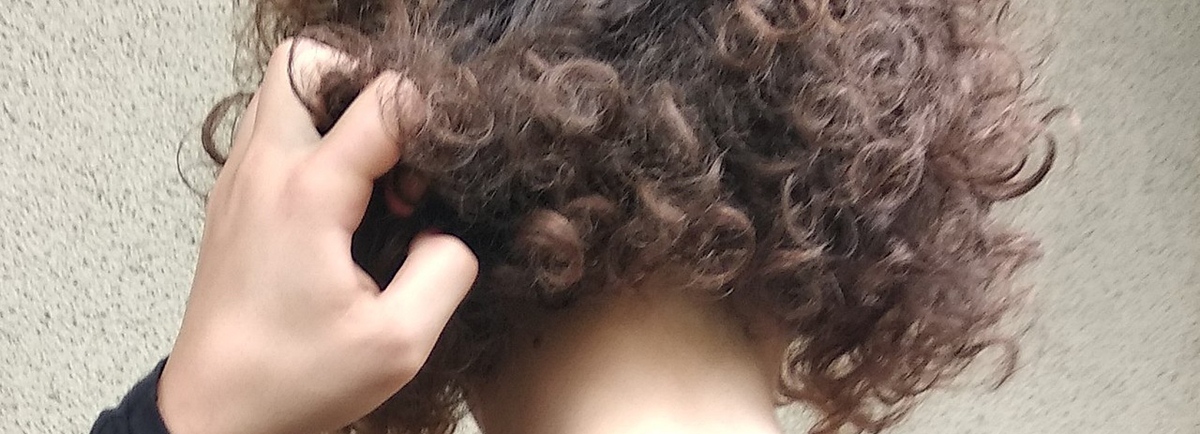Trichotillomania is a hair-pulling disorder. The person who suffers from trichotillomania intentionally pulls his/her hair, usually from the scalp but sometimes from the other parts of the body. The causes of this disorder may be gene mutations which are responsible for several neurological disorders or problems with brain chemicals such as dopamine and serotonin.
Trichotillomania may be inherited, and it affects females more than males. It usually starts during puberty and, in most cases, lasts for life. Trichotillomania can be triggered by hormone changes at that age or by a traumatic event. Some emotional disorders, such as depression, may be followed by hair-pulling disorder.

Trichotillomania Symptoms
The symptoms of trichotillomania, besides pulling the hair, may include bald spots on the head, usually the top of the head, putting the pulled hair in the mouth and eating, playing with the pulled hair, or rubbing it on the face. Some people feel great pleasure while pulling their hair.
In some cases, the symptoms can be so severe that a person with trichotillomania can lose or damage hair permanently or develop serious emotional problems. If the symptom of eating the pulled hair is distinct, it can cause the development of hairballs in the stomach which can put your health at risk because they may lead to intestinal obstruction or vomiting.
Trichotillomania Treatment
To treat trichotillomania, your doctor may recommend psychotherapy, biofeedback technique, or medications, usually antidepressants. Some antidepressants which can be helpful are clomipramine, fluoxetine, sertraline, paroxetine, citalopram, fluvoxamine, or escitalopram.
Clomipramine has given positive results in treating trichotillomania, but this medication has some side effects, such as constipation, weight gain, vision problems, or muscle tremors. These medications are useful in treating depression and similar disorders, but their effect on trichotillomania varies from person to person, and they also may have side effects such as headache, constipation, and digestive, urinary, and sexual problems.
Medication Naltrexone can also be recommended in some cases of hair-pulling disorder. This medication is usually used for treating alcohol and drug abuse, but it can help people who feel pleasure in pulling hair. Naltrexone may cause side effects such as headaches, insomnia, and nausea.
Neuroleptic medications are used in persons who have disorders that manifest as repetitive behavior or twitches, but some studies have shown that in many cases, these medications may be of help in treating trichotillomania. Lithium is a drug for treating bipolar disorder and other impulsive disorders, but it can also help some people who are dealing with trichotillomania.
- Prevalence studies suggest that trichotillomania is a common disorder (point prevalence estimates of 0.5%–2.0%). Although grouped with the obsessive-compulsive disorder (OCD) in the diagnostic and statistical manual of mental disorders-5, trichotillomania is distinct from OCD in many respects. For example, the treatment of trichotillomania generally employs habit reversal therapy and medication (n-acetylcysteine or olanzapine), both of which are quite different from those used to treat OCD.
- There are no medications approved by any regulatory agencies for the treatment of trichotillomania. Having said that, several studies examining the safety and efficacy of different pharmacological interventions have been conducted.
- Pharmacotherapies which have indicated efficacious outcomes in trichotillomania include n-acetylcysteine (NAC), clomipramine, olanzapine, and dronabinol; although, each of these treatments has been shown to be efficacious in relatively small samples of clinical trial patients. In the case of NAC, two double-blind placebo-controlled studies for trichotillomania using a dose of 1200 mg twice a day produced conflicting results. The study in adults demonstrated greater efficacy than placebo, whereas the same study in children did not.
- The studies raise the question of whether the disorder may be different in these age groups and may even change over time. Side effects with NAC are generally mild and usually only involve some bloated feelings and flatulence. The antipsychotic, olanzapine, has also been studied in one small (n = 23) 12 weeks, double-blind, placebo-controlled trial.
- Olanzapine (mean dose of 10.8 mg/day) significantly reduced symptoms of trichotillomania compared to placebo, but olanzapine has been associated with metabolic syndrome and hence, this adverse side effect profile needs to be considered when prescribing this medication.
- Finally, serotonin reuptake inhibitors are frequently prescribed for the treatment of trichotillomania, but meta-analyses have shown that only clomipramine appears to be effective and that the effect is relatively small.
- www.nhs.uk/conditions/trichotillomania/
- medlineplus.gov/ency/article/001517.htm
- Photo courtesy of Vitalicecila by Wikimedia Commons: commons.wikimedia.org/wiki/File:Trichotillomania.jpg

















Your thoughts on this
Loading...